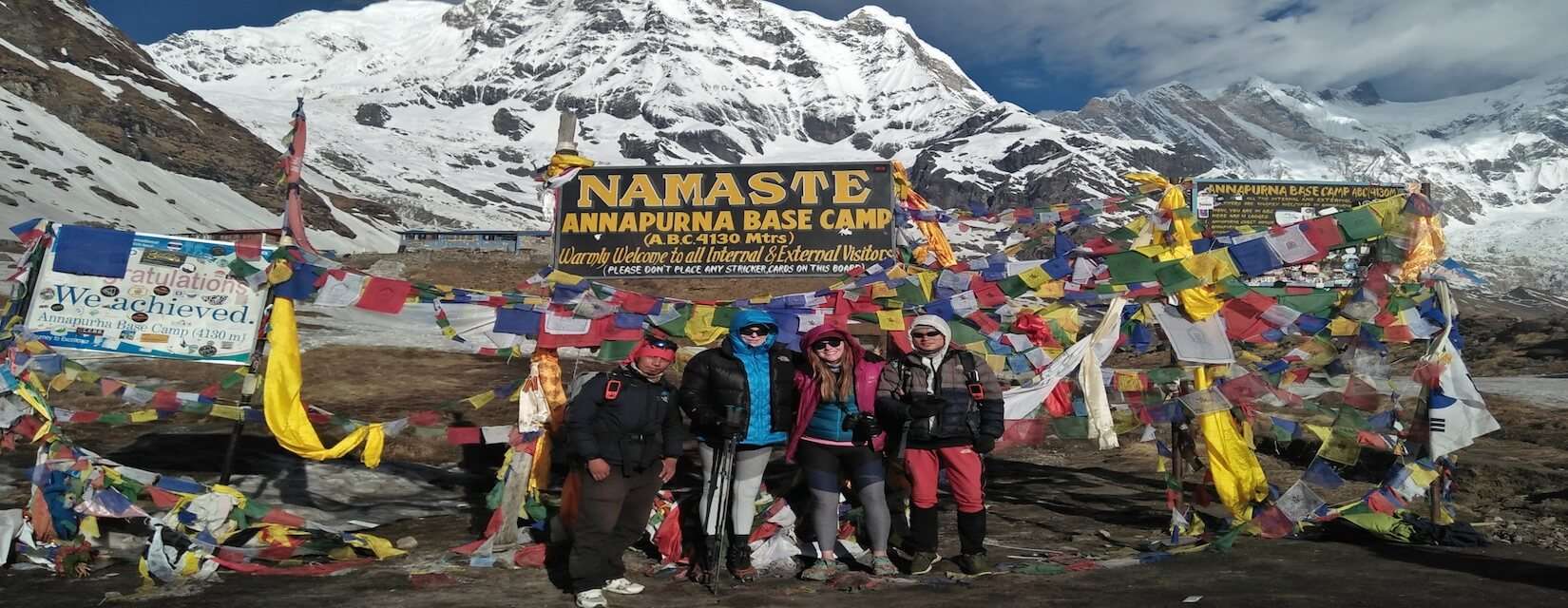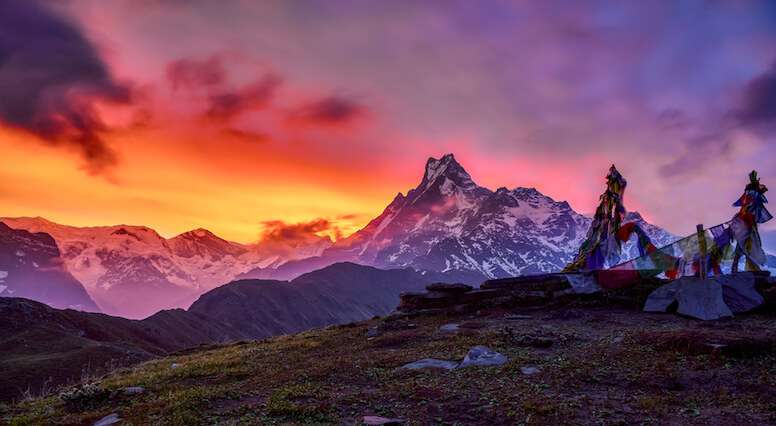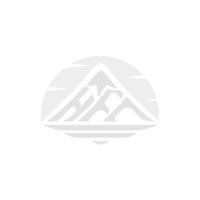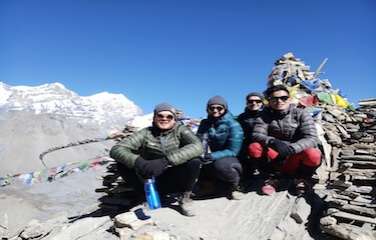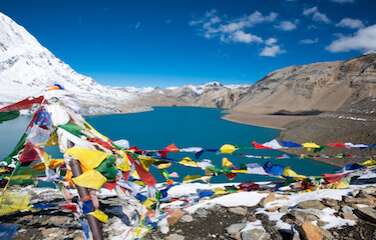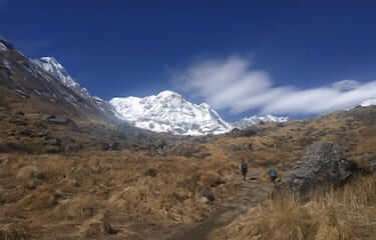About Annapurna Base Camp Trek
Join with Himalayan Frozen Adventure and let ready to get a mesmerizing lifetime experience of world attraction trekking destination Base camp of Mount Annapurna, have enjoyed the world 10th highest mountain Mount Annapurna as well as connect the glacial heart of the Himalayas, ethnicity community culture, wide beauty natural, and reach the high surrounding mountains of Nepal.
This Trek is one of the sweet adventures and popular journeys in Nepal which leads through remote traditional villages of the wonderful Annapurna region to be welcomed by gorgeous landscape views and the rich culture of locals. The world's 10th highest mountain Mt. Annapurna (8,091m) and the nearest peaks over 7,000m and 8,000m a major attraction for Annapurna base camp (4,130m/13549ft).
The trek route will include several ascends & descends, lovely forests of rhododendron, pine & bamboo, waterfalls, and small picturesque villages. For ABC Trek doesn't need to have any prior trekking experience, yet if you have one it will surely benefit, so the journey is perfect for all of the ages, In fact, it's Known as the most beautiful sanctuaries in the world, Therefore, every year thousands of travel lovers visit this region to experience the breathtaking views.
Annapurna Sanctuary trek makes fantastic moments through Mount glaciers, Terrence fields, Identity full of culture, colorful rhododendron forests, natural waterfalls, incredible scenery, diverse terrain, flora, and fauna. Annapurna Conservation Area Project (ACAP) Is known as the home of 100 mammals, more than 450 different birds, and 60 reptiles & amphibians.
Trek Annapurna Trekking trail offers wonderful Himalayan scenic like; the Annapurna range (8,091 m), Mt. Dhaulagiri (8,167 m), Mt. Nilgiri (7,061 m), Mt. Machhapuchhre (6,993 m), Tent Peak (5,663 m), Mt. Hiunchuli (6,441 m), Mt. Gangapurna (7,455 m), etc.
The Trek difficulty can be marked easy in terms of technical climbing but does demand strong determination to go on the ABC Trek for 11 days, and you have to walk around 5-7 hours per day. It's perfect for those trekkers who want to enjoy the beauty of nature and culture from the inner heart. And you will also be fascinated by the traditional Costume and culture of the beautiful Gurung village of Ghandruk in the Annapurna region.
Moreover, during the spring the entire region bloomed with colorful rhododendrons and orchids. Not only these, but ABC Trek also provides an opportunity to experience the lifestyle and traditions of people residing in this region. The trek itinerary begins at UNESCO World Heritage Sites in Kathmandu, then ascend to Gurung ethnic settlement, Chomrong, Dovan, and Deurali to Base Camp via Machhapuchhare base camp, which has spectacular views of sheer cliffs with the glacier.
Every day's Annapurna new path will attract your journey, and trekking return from Base Camp to Bamboo, Jhinu Danda Hot Spring, and tourism paradise place Pokhara. Spring from March to April and Autumn from October to November is the best season to go on ABC Trek. For the trek cost or any other information, feel free to get in touch anytime with us.
How Difficult level of ABC?
This Trek leads you to the up-close fantastic land of Mount Annapurna which touches the little difficult part of the high Himalayan valley. The high altitude of this trek is 4,130 meters above sea level. It is one of the most beautiful stunning journeys around the world's highest peaks after Everest Base Camp Trek, it's also a full safe trek for solo and group trekkers.
ABC Trekking is not considered to be a difficult level because the trek is to walk slowly and steadily but the trekkers need good preparations and training. You have to walk along the Mountain mean, stone steps, glacier zone, rocky path, and thousands of stairs, it can be difficult reach to your destination but the trek offers a very adventurous and exciting journey for adventure lovers. The trek terrain is steep and filled with steps, therefore you have to be good physical fitness for this trek.
Can I do this Trek with a family or friends group?
The Himalayan trek of ABC is moderate with short than the Everest base camp trek and Annapurna Circuit Trek, as well as limited advanced physical fitness levels trekkers also did this trek with us. To enjoy the peaceful nature and wide range of mountains as you can take your children without any risk. The journey from Poon Hill to Annapurna Base Camp allows your body to get adapted and acclimatized to high altitudes. During the trek, you should have to climb the stone steps to reach the highest elevation of this trek, 4,130M.
This is the major experience for typical Nepalese trekking
This route is a wonderful classical and legendary paradise trek for natural lovers hikers as well as you will catch the world's iconic mountain range, traditional culture of local ethnic groups, and diverse landscapes. The mountains are a big part of this journey where you get a unique lifetime experience. You will cross the peaceful villages of Ghorepani, Tadapani, Chomrong, Dovan, and Deurali, tasting their lifestyle and culture, and mostly Gurung and Magar ethnic communities reside in this trek route.
Trek begins in the beautiful city of Naya Pul via Pokhara. Before starting the trek you have two options for this ABC trek, from Ghorepani Poon Hill or Ghandruk village. This Moderate trek includes all ages of trekkers to explore the magical route of Nepal. The itinerary goes through the magnificent ambiance of Annapurna massif and the wide glacier and icefalls zone.
Is ABC Trek safe to Travel to?
Making you safe to travel is our top priority responsibility
During the trek, you will be the best training and experienced guide, who came from the high region of the Himalayans. Our guide will carry all necessary paper and essential equipment with a first aid kit. In case, if our clients come to some emergency problems of mountain sickness and accident then we immediately send a rescue helicopter. Any region of the Himalayan treks will demand good health and fitness, so make healthy your body before joining the trip.

